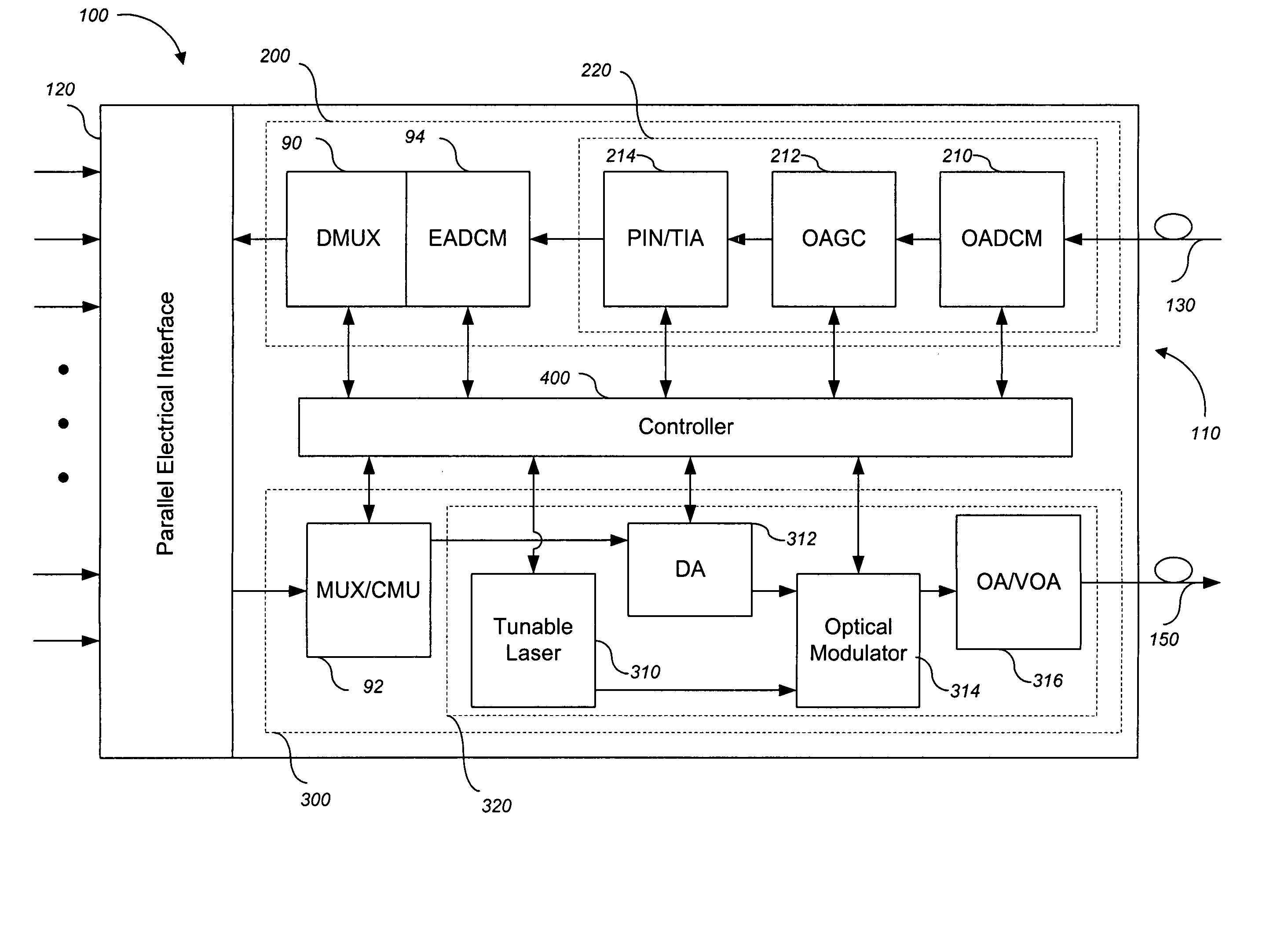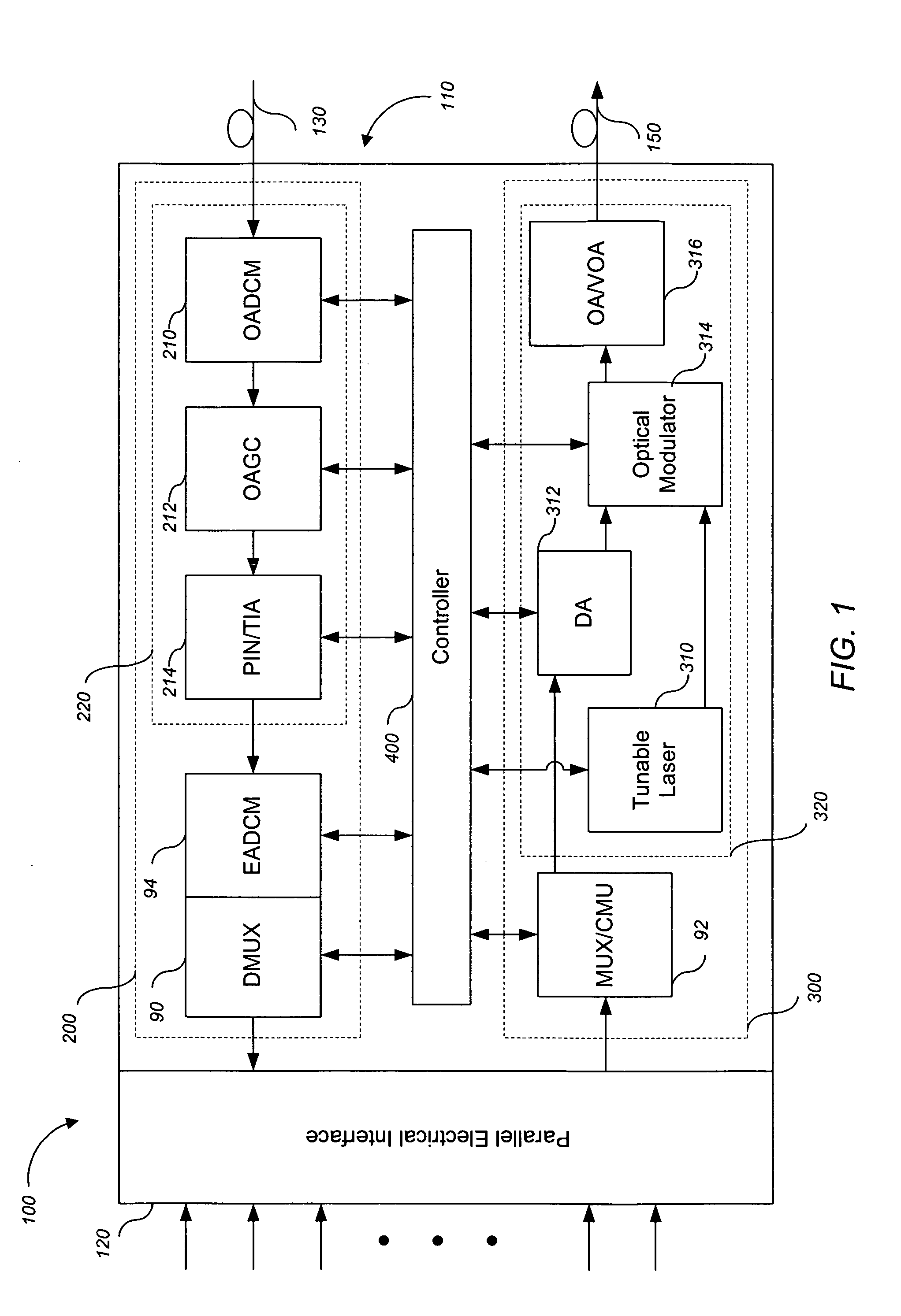Adaptive optical transponder
- Summary
- Abstract
- Description
- Claims
- Application Information
AI Technical Summary
Benefits of technology
Problems solved by technology
Method used
Image
Examples
Embodiment Construction
Shown in FIG. 1 is a schematic view of an adaptive optical transponder 100 according to one implementation. The adaptive optical transponder 100 includes a reception signal chain 200, a transmission signal chain 300, a parallel electrical interface 120, and a controller 400. An optical input terminal 130 and an optical output terminal 150 are used to couple corresponding optical signals into and out of the reception signal chain 200 and transmission signal chain 300 respectively. In one implementation, illustrated by FIG. 1, both the reception signal chain 200 and transmission signal chain 300 share access to the parallel electrical interface 120.
The controller 400 is coupled to both the reception transmission signal chain 200 and the transmission signal chains 300 at various points in order to receive information and deliver control signals to components within each signal chain. In one implementation, the controller 400 can be a microprocessor alone or a microprocessor in combi...
PUM
 Login to View More
Login to View More Abstract
Description
Claims
Application Information
 Login to View More
Login to View More - R&D
- Intellectual Property
- Life Sciences
- Materials
- Tech Scout
- Unparalleled Data Quality
- Higher Quality Content
- 60% Fewer Hallucinations
Browse by: Latest US Patents, China's latest patents, Technical Efficacy Thesaurus, Application Domain, Technology Topic, Popular Technical Reports.
© 2025 PatSnap. All rights reserved.Legal|Privacy policy|Modern Slavery Act Transparency Statement|Sitemap|About US| Contact US: help@patsnap.com



